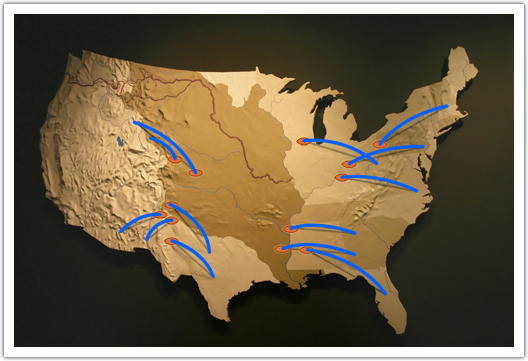The horse culture of the southwest would meet the gun culture of the northeast at the Mandan Villages, on the upper Missouri river, in the mid 1700s. Acquiring the horse brought dramatic changes to once semi-sedentary tribes, like the Sioux and Cheyenne, who migrated out of the forests of the upper Mississippi River Valley and out onto the plains. Photo by Edward Curtis

Tribes on the plains escaped for a
time the denigrating influence of traders and missionaries…thus
providing a startling contrast to the recent history of the eastern
woodlands tribes, which had paid a price both in blood and in the
loss of ancestral homelands, for their willingness to trust the
treaty terms offered by Euro-Americans.
Click here for more on tribal migration
Left to themselves, the new
nomadic citizens of the plains quickly extended their ethnic
longevity and adapted to their environment, flourishing with the
help of the horse and plentiful buffalo. During this brief
period, from the 1730s to the 1840s, the Comanche and Crow,
Blackfeet, Mandan, Arikara, Hidatsa, Arapaho and Cheyenne, are said
to have been among the freest people to have ever roamed the
earth.
Related Events
Related Flashpoints